 | A. Melrose (Teacher) - Arithmetic - 1795 - 140 pages
...equal value, having a common denominator ; multiply each numerator into all tht denominators, except its own, for a new numerator ; •and multiply all the denominators together, for the common denominat: r. 1. Reduce -J and 4 to a common denominator. ,113 ,5780 ,786 ~8l*9 2. T T'... | |
 | James Maginness - Arithmetic - 1821 - 378 pages
...denominators, to fractions of the same value, that shall have a common denominator. 2. To do this, we must multiply each numerator by all the denominators but its own, for a new numerator, and all the denominators for a common de nominator, and the thing is done. EXAMPLES. I. Reduce |, }•£... | |
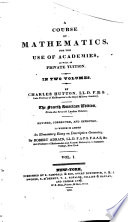 | Charles Hutton - Mathematics - 1825 - 608 pages
...having a Common Denominator. * MULTIPLY each numerator by all the denominators except its own, for the new numerator* : and multiply all the denominators together for a common denominator. J\"otf, It is evident that in this and several other operations, when any of the proposed quantities... | |
 | William Ruger - Arithmetic - 1832 - 282 pages
...common denominator. RULE. — Multiply each numerator b'v all the denominators except its own, for the new numerator: and multiply all the denominators together for a common denominator. NOTK. — When any part of the given sum consists of mixed numbers or compound fractions, they must... | |
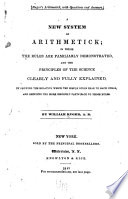 | William Ruger - Arithmetic - 1841 - 268 pages
...common denominator. RULE. — Multiply each numerator by afl tJie denominators except its own, for the new numerator ; and multiply all the denominators together for a common denominator. NOTE. — When any part of the given sum .consists of mixed numbers or compound fractions, they must... | |
 | William Vogdes - Arithmetic - 1847 - 324 pages
...do you abbreviate the operation? § 73. CASE 6. To reduce fractions to a common denominator. RULE 1. Multiply each numerator by all the denominators but its own, for a new numerator ; and all the denominators together for a common denominator. EXAMPLES. 1. Reduce |, |, and f to a common... | |
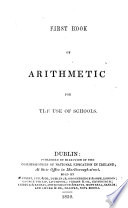 | Commissioners of National Education in Ireland - Arithmetic - 1850 - 162 pages
...reduce fractions to a common denominator. RULE Multiply each numerator by all the denominators, except its own, for a new numerator ; and multiply all the denominators together for a new denominator. Reduce | , | , and ^ to a common denominator. Here the first numerator, 2, is 2X5X7=... | |
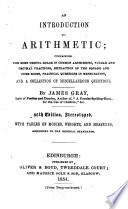 | James Gray - Arithmetic - 1854 - 120 pages
...fractions to a common denominator. RULE. Multiply each numerator into all the denominators, except its own, for a new numerator ; and multiply all the denominators together for a common denominator. NOTE. Fractions may often be reduced to a common denominator, by multiplying their numerators and denominators... | |
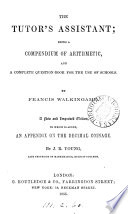 | Francis Walkingame - 1855 - 186 pages
...fractions to a common denominator. KULE 1. Multiply each numerator into all the denominators, except its own, for a new numerator; and multiply all the...denominators together for a common denominator. Or, 2. Multiply the common denominator by the several given numerators separately, and divide the product... | |
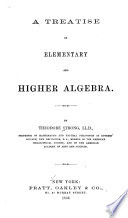 | Theodore Strong - Algebra - 1859 - 570 pages
...denominator, without altering their values. EULE I. Multiply each numerator by all the denominators except its own, for a new numerator ; and multiply all the denominators together for a new denominator. BULE II. (Which gives the least common denominator.) Take the least common multiple... | |
| |